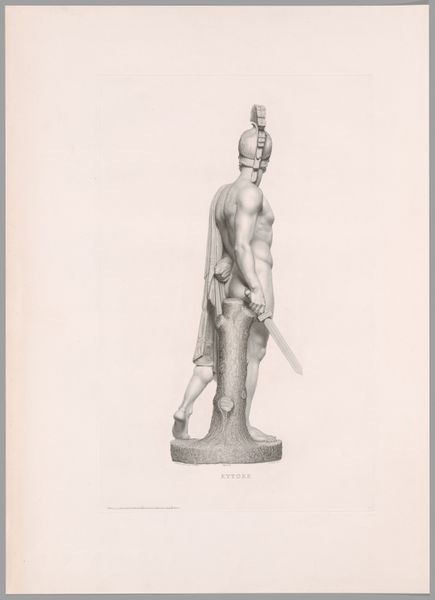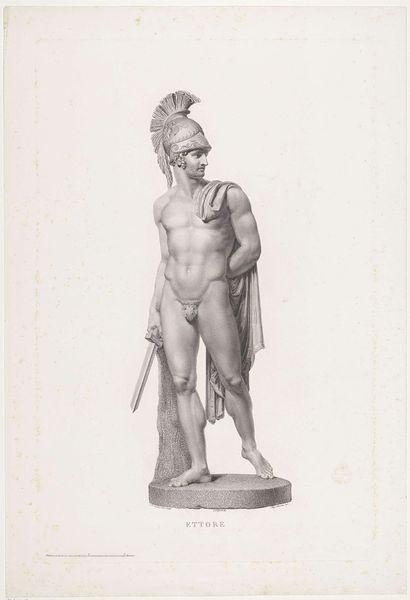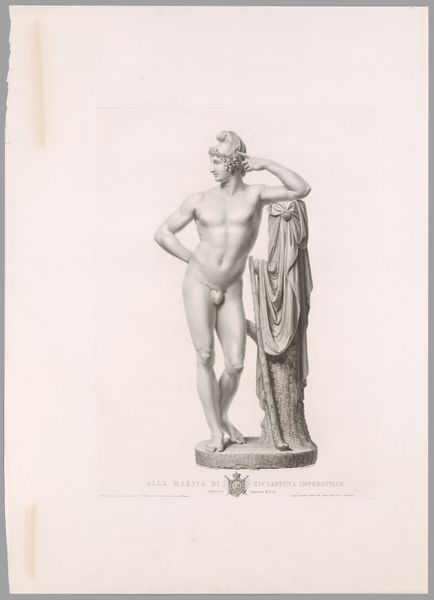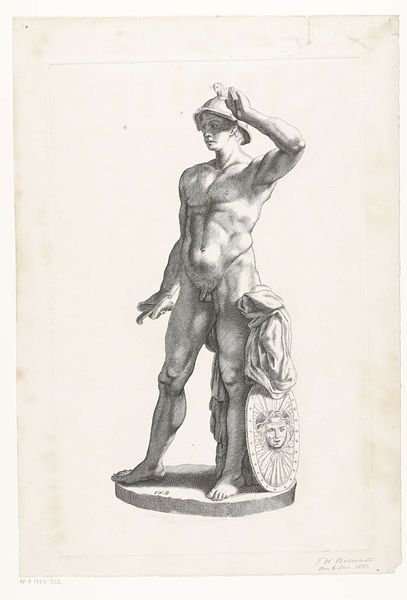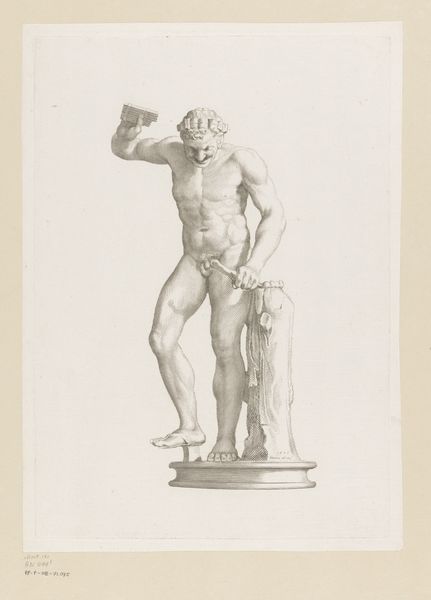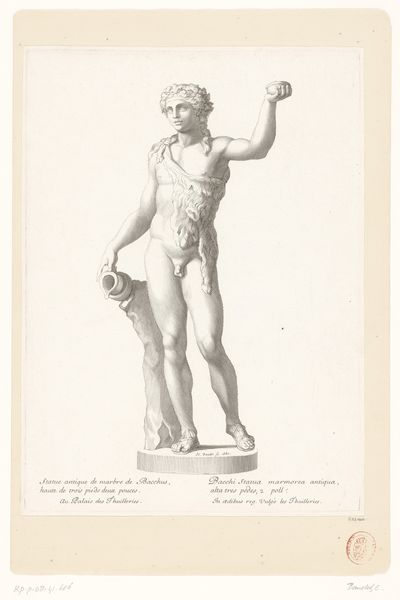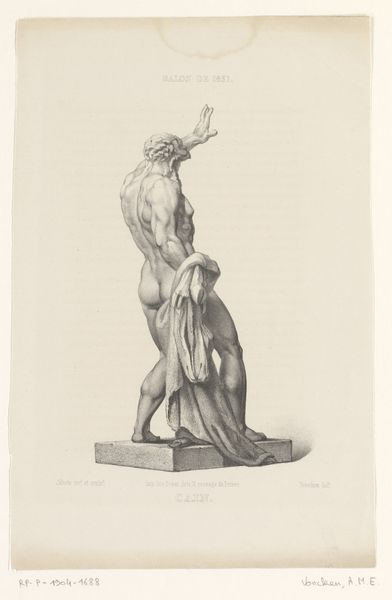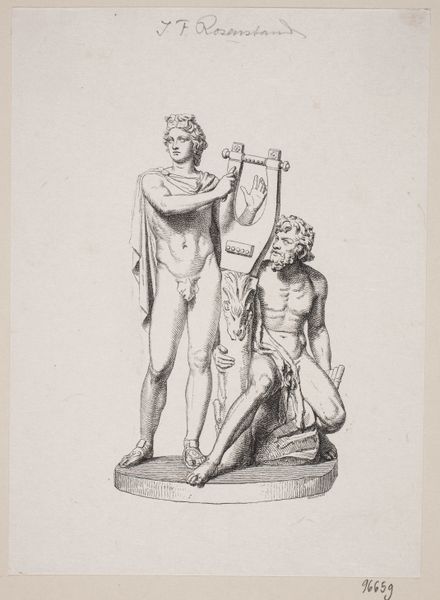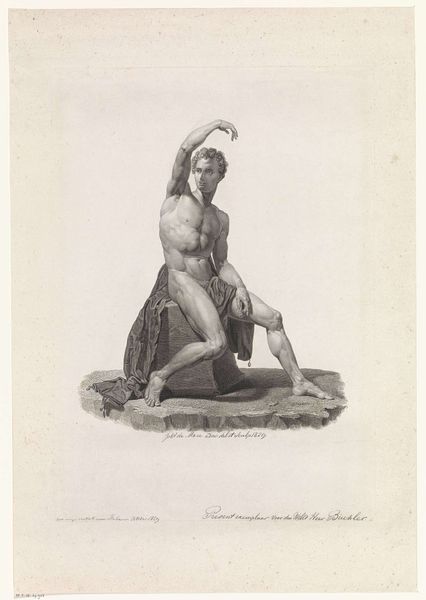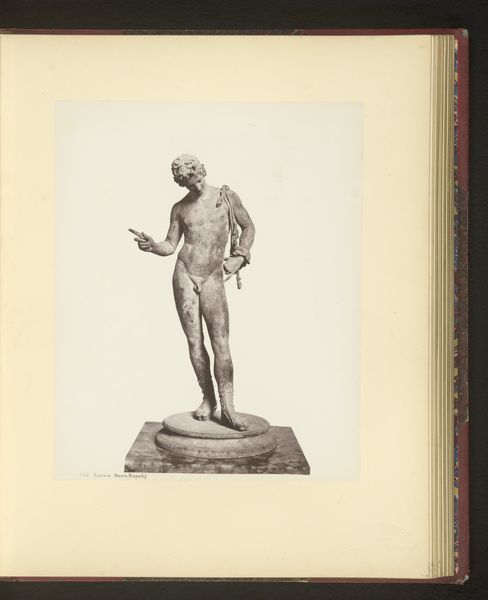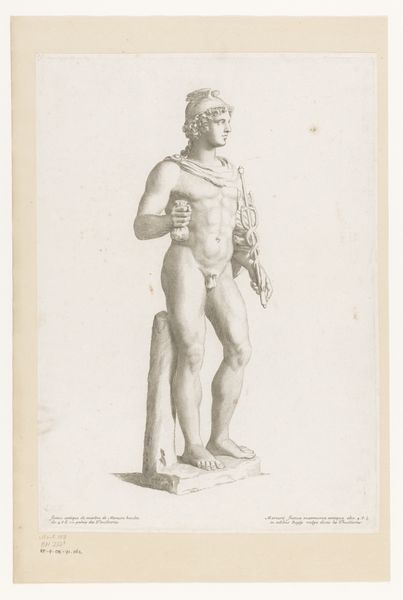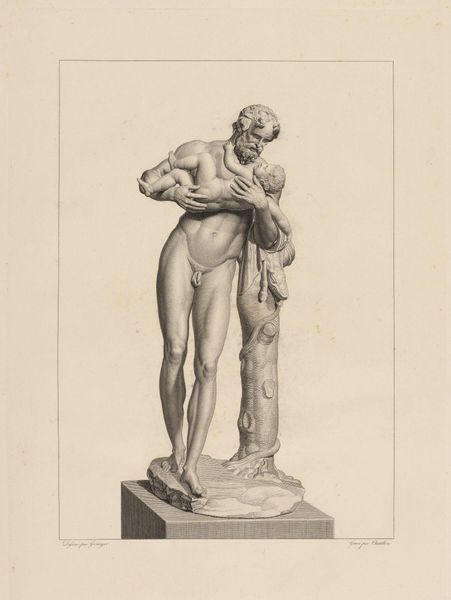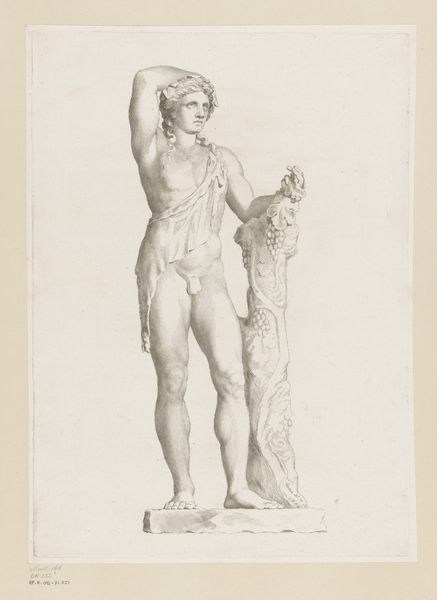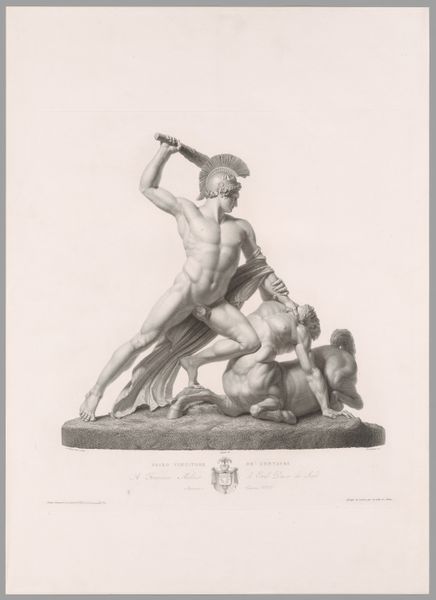
drawing, print, etching, paper, engraving
#
portrait
#
drawing
#
neoclacissism
# print
#
etching
#
greek-and-roman-art
#
classical-realism
#
figuration
#
paper
#
history-painting
#
nude
#
engraving
Dimensions: 625 x 397 mm (plate); 860 x 620 mm (sheet)
Copyright: Public Domain
Editor: Here we have "Ettore, Front View, from Oeuvre de Canova," an etching made in 1817, from a drawing by Antonio Canova. It's part of the collection here at the Art Institute of Chicago. I am immediately struck by the figure's stillness and somewhat mournful gaze. What are your initial thoughts? Curator: Oh, Ettore. Yes, stillness is key. Think about what's been stilled. Not just a man, but an idea, a classical ideal frozen onto paper. Canova was obsessed with capturing that elusive Greek spirit, wasn't he? Notice how the etching almost mimics the cool, smooth surfaces of marble sculpture? The lines are so precise, so deliberate. It's almost clinical in its perfection, don’t you think? Like pinning down a butterfly. Editor: Yes, I see that now. It feels a little... distant? Less emotional than I initially thought. Curator: Exactly! This is Neoclassicism in action. Emotion is there, but always tempered by reason, by that cool, Apollonian gaze. This wasn't about raw feeling, it was about something... higher. Ideals. Think heroism, sacrifice... But then look at his expression. Do you see the seeds of tragedy there, the subtle tension around his mouth? He’s armored, but also vulnerable, isn’t he? Like knowing the ending of a beautiful song before it begins. Editor: Definitely! That contrast between the strength in his posture and the sadness in his face... I hadn't noticed that before. It completely changes my interpretation. Curator: Art, like life, is all about the looking, then the *re*looking, wouldn’t you say? Editor: I completely agree. Thanks for pointing those details out to me!
Comments
No comments
Be the first to comment and join the conversation on the ultimate creative platform.
